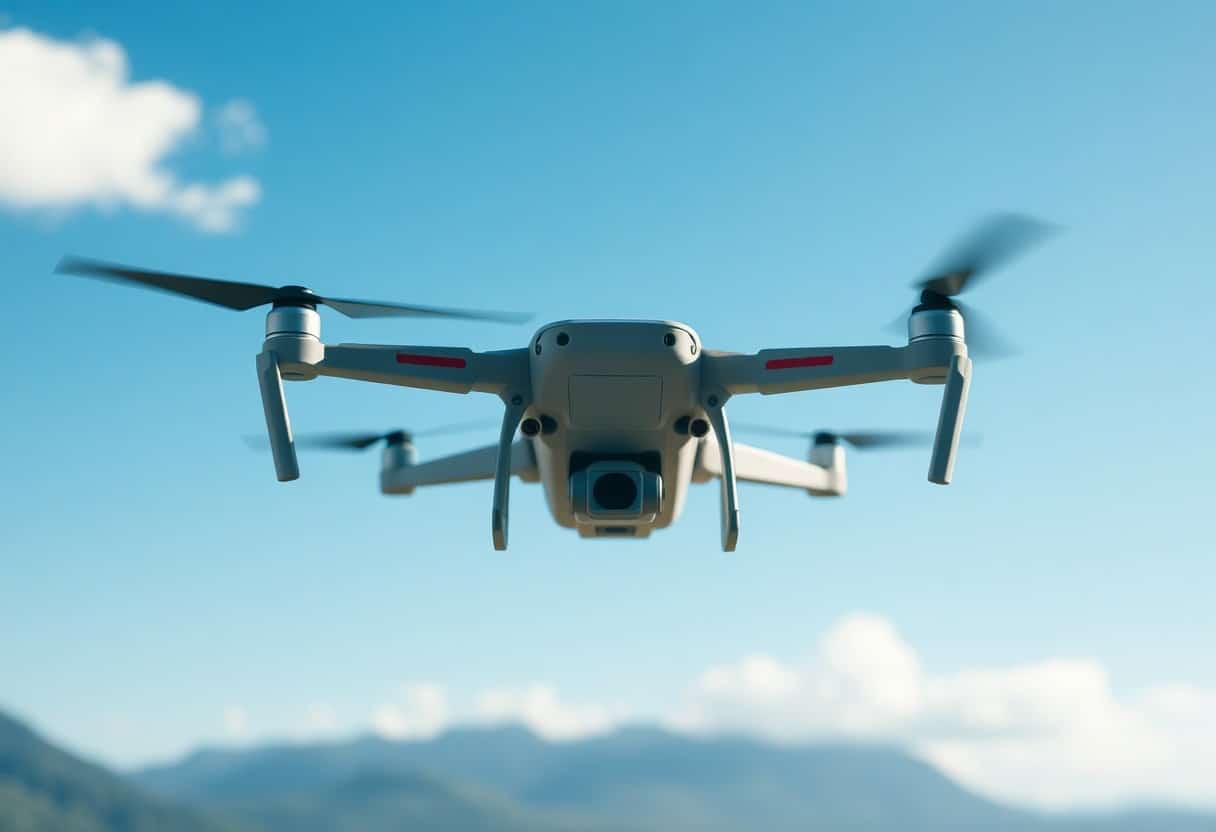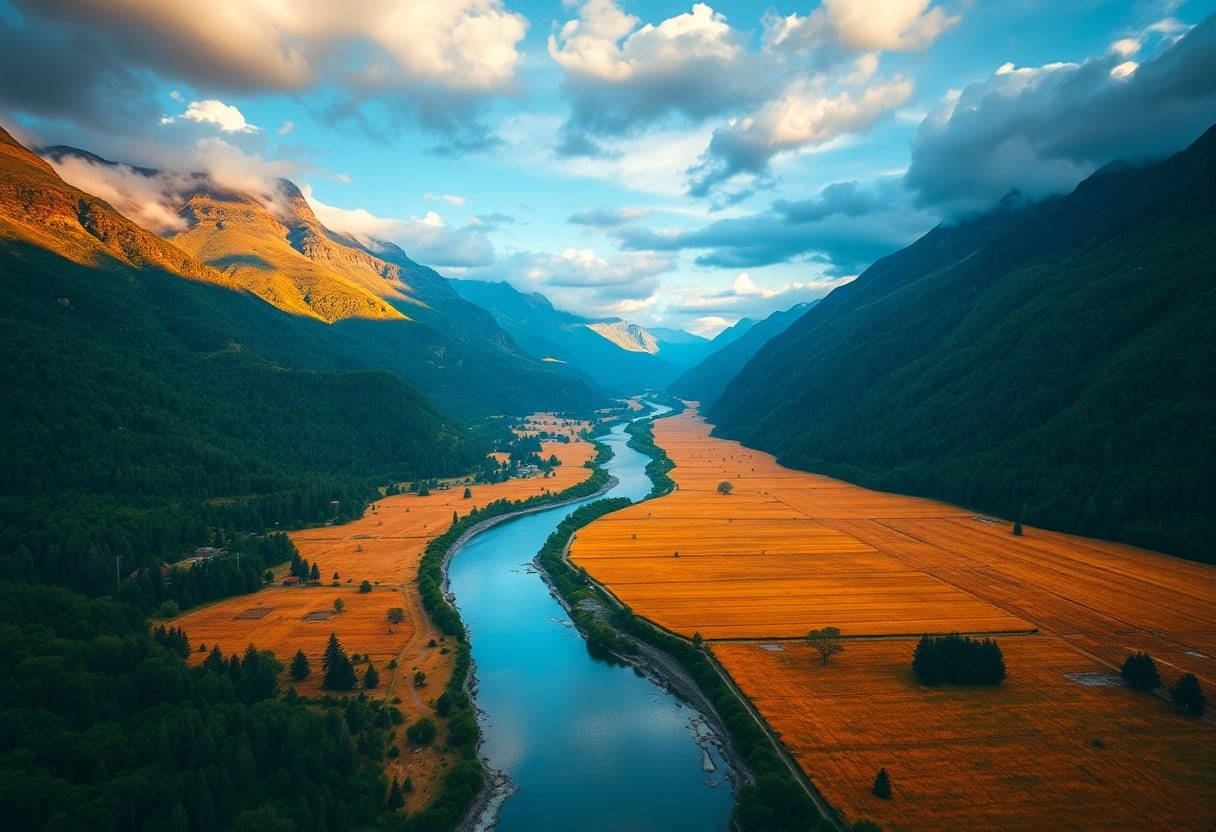Unlock amazing aerial photography in 7 easy steps!
In this article, you will learn toSeven Simple StepsUnlock amazing aerial photography techniques. Whether you're a novice or an experienced photographer, these tips will help you improve the quality of your aerial photography. With the right planning and techniques, you'll be able toCapture spectacular imagesThe most important thing you can do is to show the unique scenery in your field of vision. Ready to make your photography stand out? Then let's get started!
Main Harvest:
- Equipment: Choose the right aerial camera and camera for the best results.
- Understanding Light: Master the effects of natural light and the time of day, and choose the best time to shoot.
- SteadyShot: Use a head or stabilizer to eliminate picture flutter and ensure a smooth picture.
- Compositional Skills: Use the rule of thirds and symmetrical composition to enhance the attractiveness of the image.
- Creative Perspectives: Try different heights and angles to find a unique visual effect.
- Post-shoot Editing: Use post-production editing software to retouch the image and enhance colors and details.
- Safety Specifications: Follow local flight rules and laws for safe filming.
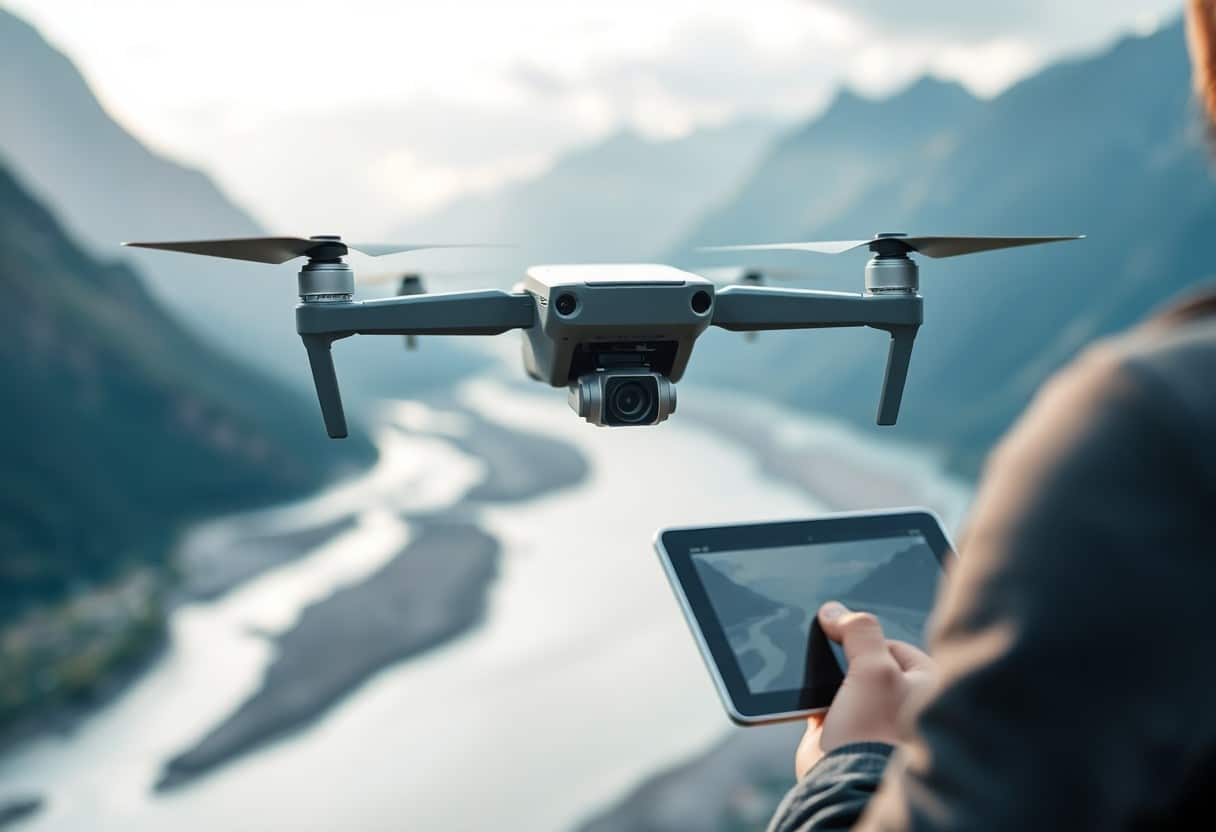
Understanding the Basics of Aerial Photography
Aerial photography is a skill that combines technology with art, allowing you to capture landscapes and subjects from a whole new perspective. Whether you are using a drone or other aerial photography equipment, understanding the fundamentals such as composition, lighting and photography techniques will make your photos more appealing. Mastering these fundamentals will enable you to be more successful in this field.
Necessary Equipment
When it comes to aerial photography, choosing the right equipment is crucial. Drones are the most popular choice these days, so make sure they have high-definition photography capabilities and stable flight performance. In addition, you may also need to have batteries, memory cards and suitable sports photography equipment to keep your shots consistent.
Drone Regulations and Safety
When operating a drone for aerial photography, it is important to follow local laws and regulations. This not only protects your personal safety, but also prevents you from facing legal trouble. It is the basic responsibility of every operator to familiarize themselves with the flight restrictions, reporting requirements, and flight zones of the drone.
comply withDrone Regulationsrespond in singingFlying SafetyRequirements are fundamental to ensuring that your filming activities run smoothly. Knowing the flight restrictions, especially in urban or sensitive areas, can help you avoidLegal disputesmaybePenalty. In addition, maintaining a safe flying altitude and staying away from other flying objects will help protect your safety and the interests of others. Before shooting, remember to be fully aware of any special regulations in your area to ensure a smooth shoot and great images!
Plan your aerial photography
Prior to aerial filming, theProgramsThis is a crucial step. You need to understand the subject, the style of the shoot and create a detailed itinerary to ensure that all the equipment is in place to get the best images. From researching locations to considering public safety, thoughtful planning can make your shoot go more smoothly.
Choosing the Perfect Position
When choosing a location for a photo shoot, consider the topographical features and visual effects. Look for locations that are full of Vivid Colors respond in singing Strong contrast This will enhance the quality of your work. Consider urban silhouettes, spectacular natural landscapes, or special events that add flair to your creations.
Timing and light considerations
Choosing the right time and light is crucial for aerial photography.Golden HourThe hours around sunrise and sunset bring a soft, natural light to your images, which enhances the beauty of your work. Plan your shooting time to avoid midday, when the light is often too harsh and affects the image quality.
Timing and light should not be overlooked. No matter what time frame you choose, theIntense light changesAll have a major impact on the final image. Sunrise and sunset light is soft and layered and can enhance the emotion of your images. It is recommended that you choose the time of day you want to shoot against the local sunlight schedule to ensure that you are shooting under the most appropriate lighting. In addition, weather conditions can also greatly affect the outcome of your photo shoot, so check the forecast in advance and be flexible in adjusting your shooting schedule.
Mastering Camera Settings for Aerial Shots
When taking aerial shots, mastering your camera settings is key. You'll need to adjust your shutter speed, aperture, and ISO for different environments and lighting conditions to ensure that every image you take is optimized. For more information10 Steps to Mastering the Rules for Commercial Use of DronesFor tips, keep reading.
Optimal Camera Configuration
In aerial photography, the best camera configuration includes choosing the right lens, a stable head, and an efficient shooting mode. You may need to use a lower ISO to minimize noise, along with the right shutter speed to capture the action and get a clear picture.
Compositional Skills
Composition is crucial in aerial photography and can help you create compelling images. Using techniques such as the rule of thirds or leading lines can give your photos a professional look. Make sureUtilizing foreground and backgroundThis will make your aerials more appealing by adding layers of contrast.
In terms of composition, you canTry a different perspectiveand height to find the best visual effect. For example, when looking down from a height, choosing a simple composition will emphasize the subject. Utilizing natural elements as a frame will also make your photos more vivid. In aerial shots, making good use of changes in light can also enhance the image and create strong emotions. Ensure that you consider composition in every shot, as this will greatly enhance the quality of your photos.
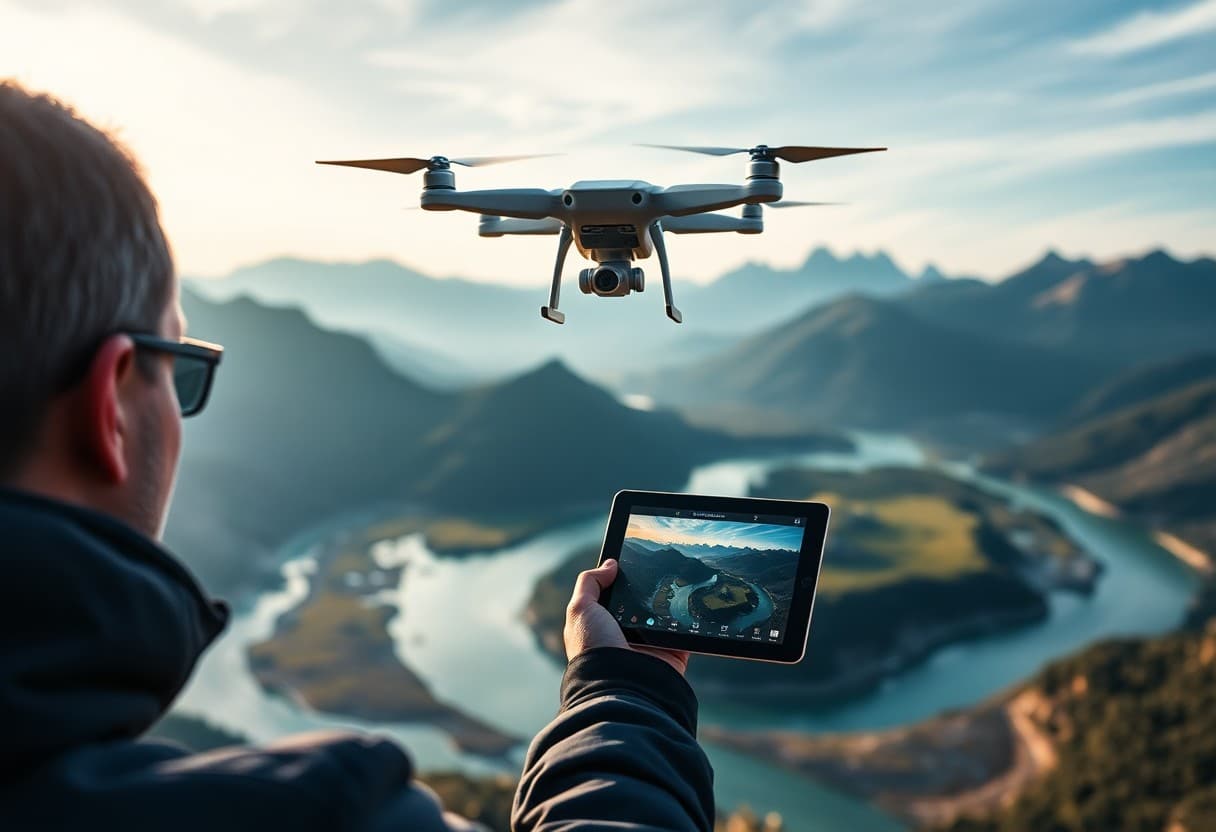
Execute the flight
When flying, you need to make sure that all preparations have been made. Familiarize yourself with your drone's operation and know the local flight regulations so that you can start your aerial photography trip safely. You can refer to this article in theWhat aerial composition tips make your drone photography stand out?Get more inspiration.
Pre-flight checklist
Before taking off, double-check your drone and equipment to make sure all components are functioning properly. Check the battery level, propeller and camera settings, and make sure your drone's firmware is up to date. These steps will help you avoid unnecessary malfunctions and ensure a smooth flight.
Smooth Flight Techniques
To ensure your drone's stability in the air, slow and steady maneuvers are key. Use the trimmer to make fine adjustments and avoid rapid changes in direction or sharp braking, which reduces the risk of camera shake and blurred images. Your goal is to keep the drone's altitude and orientation consistent for smoother images.
When performing the stabilized flight technique, remember toAvoid flying in windy conditions.This is because it increases the risk of losing control of the drone. Maintaining consistency in your operations will not only improve the quality of your photography, but also reduce the risk ofMalfunction or accidental fallThe chances of getting a good shot are slim to none. During the shooting process, it is very important to keep observing your surroundings and make timely adjustments, which will make your photography even better.
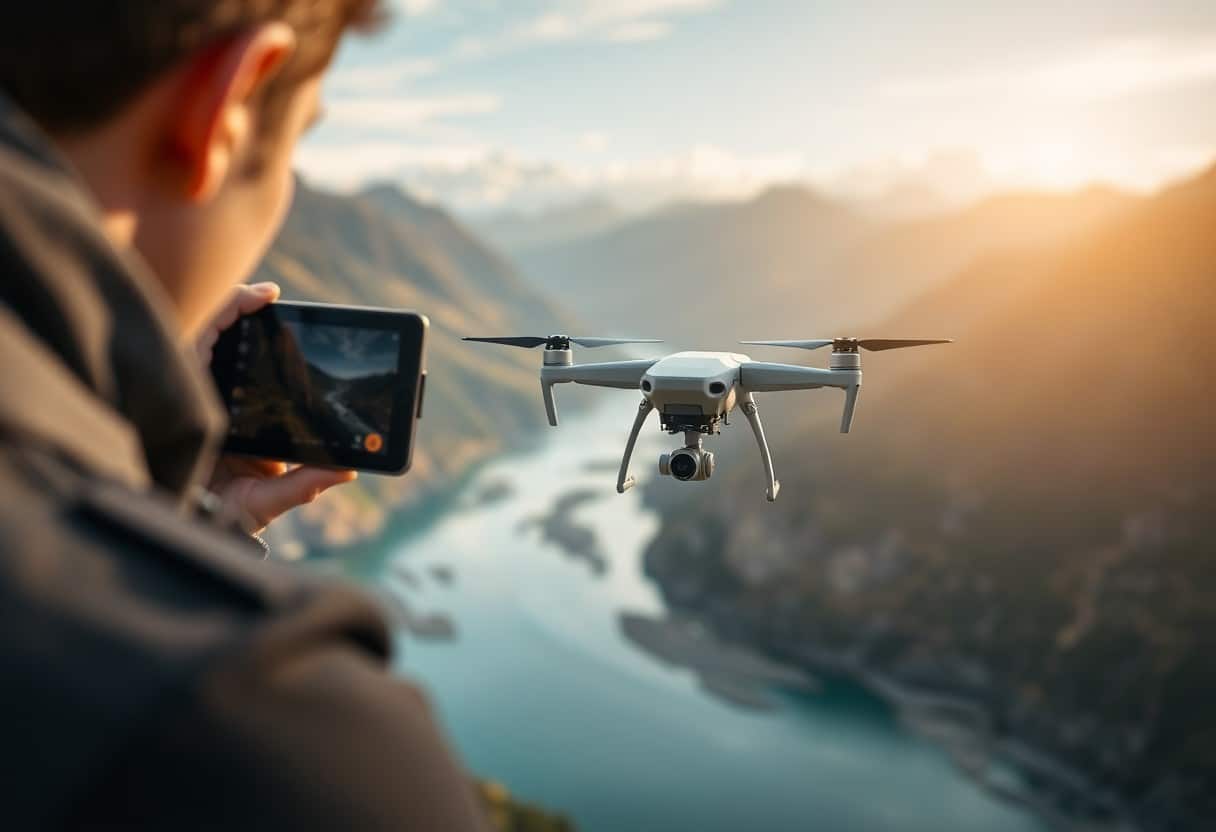
Capture amazing images
In aerial photography, there are a few tricks you need to master to capture stunning images. First, understand the keyStep by Step - The 6 Best Techniques for Drone 3D ModelingEnhance the quality of your shots and help you create more compelling images. Each flight is unique, encompassing a blend of natural beauty and man-made landscapes.
Advanced Photography Tips
To enhance your aerial photography, you can utilize the following advanced photography techniques:
| finesse | descriptive |
| Utilization Comparison | Emphasize the contrast of colors and shades. |
| Adjusting the Viewing Angle | Change the camera angle to get different visual effects. |
| Control Light | Choose the best time to shoot to take advantage of natural light. |
Attractive Angle Technique
SelectionAttractive anglesIt is important to enhance the visual impact of your work. You may consider the following suggestions:
- Choose a unique viewpoint
- Try different camera positions for high and low shots
- Utilizing symmetry to create a sense of balance
The angle you choose can dramatically enhance the appeal of your photos, ensuring that every image is impressive.
Deeper understandingAttractive Angle TechniqueAfterward, you'll find even more creative ways to take pictures.
- Consider using lines to guide the eye when taking pictures
- Focusing on the environment around the subject
- Explore different focal lengths for panoramic views or details
These techniques will help you create more compelling images that stand out from the crowd.
Post-Production Tips
Post-production is a critical step in improving the quality of your aerial images. With the right editing techniques, you can not only correct colors and lighting, but also enhance the overall feel of the image. With careful post-production, you can transform ordinary images into striking visual art that will leave your audience in awe.
Recommended Editing Software
When choosing your post-production software, you may want to consider using the Adobe Premiere Pro respond in singing Final Cut ProThese are professional grade editing tools. In addition.DaVinci Resolve Powerful color adjustment is also provided to make your aerial images more attractive.
Enhance your aerial images
To effectively enhance the quality of your aerial images, you can utilize a variety of editing techniques. Adjusting the contrast and brightness, as well as performing color correction, can make your images come alive. Try addingmasking effectmaybeEditing TransitionsThis will make your work more professional and visually appealing.
The process of enhancing the aerial imageMastery of detailsIt's important. By adjusting the color balance and contrast, you can present a more vivid image. In addition, using filters and special effects not only adds dimension to your images, but also creates a distinctive style. Throughout the editing process, be sure to maintain a natural feel to your images so that the beauty of your work blends seamlessly with your technique.
Unlock Amazing Aerial Photography Techniques: 7 Simple Steps
With these seven simple steps, you'll be able to master the art of aerial photography and improve your shots. Learn how to choose the right equipment, composition, lighting and post-processing to give your work a professional look. Whether you're a novice photographer or an experienced professional, these tips will help you broaden your creative horizons and deliver stunning results with every shot. Get started today and make the most of your photography journey!
Frequently Asked Questions
Q: What is "7 Simple Steps to Unlock Amazing Aerial Stunts"?
A: This is a guide for aerial photography enthusiasts, designed to help them master the basic principles and techniques in order to enhance their aerial photography skills in seven simple steps.
Q: What equipment do I need to start learning these aerial photography skills?
A: You'll need a drone suitable for aerial photography, a camera, tripod, and some basic post-editing software such as Adobe Lightroom or Final Cut Pro.
Q: Can beginners follow this guide?
A: Yes, this guide is designed for people of all skill levels. Beginners will walk away with clear instructions and practical tips to enhance their shooting.
Q: In what environment can I practice these techniques?
A: You can practice these techniques in many different environments, such as cityscapes, natural landscapes, beaches or mountains, etc. Choose the best location based on your photographic needs and creativity.
Q: How long does it take to learn these skills?
A: Learning time varies from person to person and usually ranges from a few days to a few weeks. Depending on your personal progress and practice time, you can master the basics and start taking great aerial photos in no time.
Q: Are there any recommended exercises to improve my photography skills?
A: We recommend you to do more on-site shooting practice, and you can also join aerial photography workshops, online courses, and exchange experiences with other photography enthusiasts to accelerate your progress.
Q: Will this guide be updated regularly to reflect new photography techniques and trends?
A: Yes, this guide is regularly updated with developments and new technologies in the field of photography to ensure that readers are equipped with the latest skills and knowledge to stay competitive.
